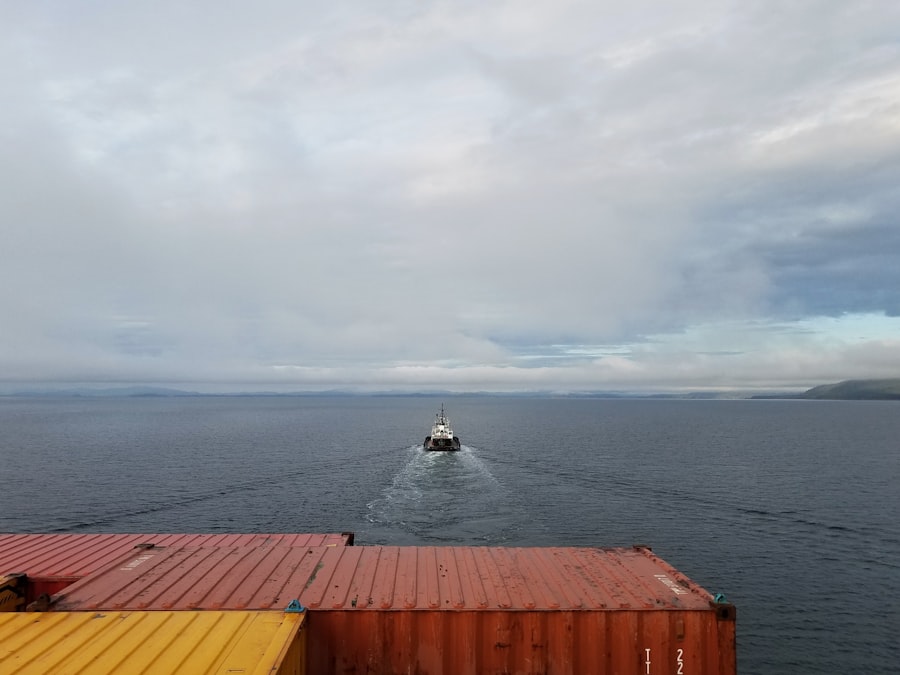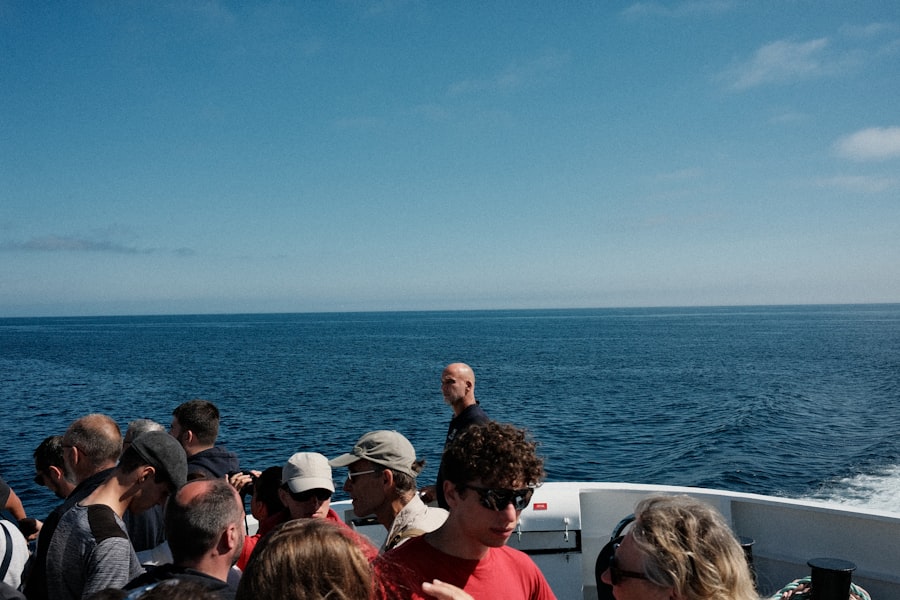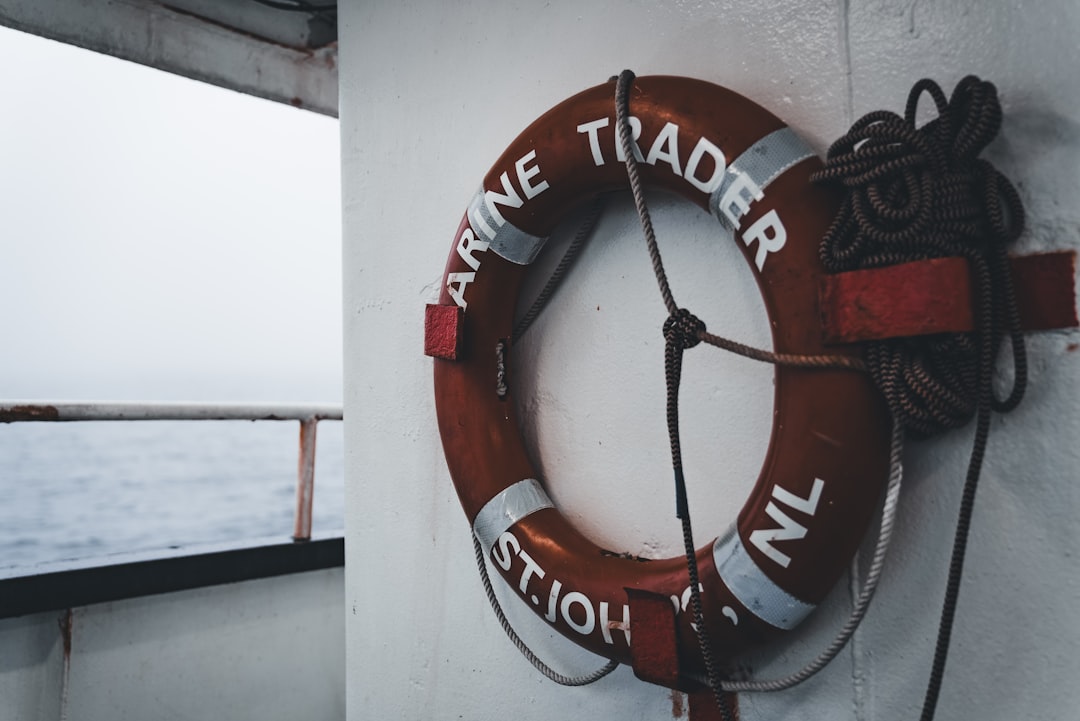The Drake Passage, a narrow stretch of water located between the southern tip of South America and Antarctica, is often regarded as one of the most treacherous maritime routes in the world. Named after the English explorer Sir Francis Drake, who navigated these waters in the late 16th century, this passage has earned a reputation for its unpredictable weather and tumultuous seas. Spanning approximately 600 kilometers (370 miles) in width, it serves as a critical conduit for vessels traveling to and from the Antarctic region.
The Drake Passage is not merely a geographical feature; it is a symbol of adventure and the raw power of nature. For centuries, sailors have been both fascinated and terrified by the Drake Passage. Its waters are notorious for their strong currents and high waves, which can reach heights of up to 15 meters (49 feet) during storms.
This unpredictability has led to countless tales of maritime heroism and tragedy. Despite its challenges, the passage remains a vital route for researchers, adventurers, and tourists eager to explore the wonders of Antarctica. The allure of the Drake Passage lies not only in its perilous conditions but also in the breathtaking landscapes and unique wildlife that can be encountered along the way.
Key Takeaways
- The Drake Passage is known as the world’s most infamous waterway, connecting the Atlantic and Pacific Oceans.
- Travelers should expect rough seas and strong winds when navigating the Drake Passage, so it’s important to be prepared for motion sickness.
- The passage is home to a diverse range of wildlife, including penguins, seals, and various species of whales, making it a paradise for nature enthusiasts.
- Sailing through the Drake Passage is a thrilling experience that challenges travelers to embrace the unpredictability of the crossing.
- The weather in the Drake Passage can be extremely unpredictable, so it’s crucial for travelers to be aware of safety measures and prepared for changing conditions.
Preparing for the Journey: What to Expect When Navigating the Drake Passage
Embarking on a journey through the Drake Passage requires careful preparation and a sense of adventure. Travelers should be aware that conditions can change rapidly, and being mentally and physically ready for the experience is essential. Most expeditions begin in Ushuaia, Argentina, where travelers board vessels equipped to handle the challenges of the passage.
It is advisable for passengers to pack appropriately, including layers of clothing to accommodate fluctuating temperatures, waterproof gear, and seasickness medication, as the waters can be notoriously rough. Once aboard, travelers can expect a mix of excitement and apprehension as they set sail into the open waters. The initial hours may be relatively calm, but as they approach the infamous Beagle Channel, the true nature of the Drake Passage begins to reveal itself.
Crew members often provide safety briefings and information about what to expect during the crossing. Passengers are encouraged to familiarize themselves with the ship’s layout and safety protocols, ensuring they feel secure as they embark on this unforgettable journey.
Wildlife Encounters: The Incredible Animal Species You Can Spot Along the Way

One of the most enchanting aspects of navigating the Drake Passage is the opportunity to encounter a diverse array of wildlife. The waters are teeming with life, and travelers may spot various species of seabirds, seals, and even whales during their crossing. Albatrosses, with their impressive wingspans, glide gracefully above the waves, while playful dolphins often accompany vessels as they traverse these waters.
The sight of these magnificent creatures can evoke a sense of wonder and connection to nature that is truly unforgettable. As travelers approach Antarctica, they may also witness the majestic sight of icebergs and glaciers, which serve as habitats for numerous animal species. Penguins are among the most beloved inhabitants of this region, with several species, including Gentoo and Adélie penguins, making their homes on the icy shores.
Observing these charming birds in their natural habitat is a highlight for many travelers, providing an intimate glimpse into their daily lives as they waddle across the ice or dive into the frigid waters in search of food.
The Thrill of the Crossing: Embracing the Challenges of Sailing Through the Drake Passage
| Metrics | Data |
|---|---|
| Passage Name | Drake Passage |
| Location | Between South America’s Cape Horn and the South Shetland Islands of Antarctica |
| Width | Average width of 800 kilometers |
| Depth | Maximum depth of 5,000 meters |
| Challenges | Strong winds, rough seas, and potential for extreme weather conditions |
| Wildlife | Opportunities to see various species of whales, seals, and seabirds |
The thrill of crossing the Drake Passage lies in its inherent challenges. For many adventurers, navigating these tumultuous waters is a rite of passage that tests their resilience and fortitude. As waves crash against the hull and winds howl through the rigging, passengers often find themselves caught between exhilaration and trepidation.
This unique experience fosters camaraderie among travelers as they share stories and support one another through moments of uncertainty. The unpredictability of the passage can also lead to unexpected moments of beauty. As storms roll in and out, travelers may witness dramatic changes in the landscape, from dark, brooding skies to stunning sunsets that paint the horizon in vibrant hues.
These fleeting moments serve as reminders of nature’s power and beauty, encouraging travelers to embrace both the challenges and rewards that come with navigating this iconic waterway.
Weathering the Storm: Navigating the Unpredictable Weather of the Drake Passage
The weather in the Drake Passage is notoriously unpredictable, with conditions that can shift from calm to chaotic in a matter of hours. Travelers must be prepared for everything from sunny skies to torrential rain and fierce winds. Understanding this variability is crucial for anyone embarking on a journey through these waters.
Experienced crew members are well-versed in reading weather patterns and will provide updates to ensure passengers are informed about what lies ahead. Safety measures are paramount when navigating such unpredictable weather. Ships are equipped with advanced technology to monitor conditions and ensure safe passage through rough seas.
Passengers are encouraged to remain vigilant and follow crew instructions during inclement weather. While some may find themselves feeling queasy during turbulent moments, others may revel in the thrill of experiencing nature’s raw power firsthand. Ultimately, it is this unpredictability that adds an element of excitement to the journey.
Historical Significance: Exploring the Rich History of the Drake Passage

The Drake Passage is steeped in history, serving as a vital route for explorers and adventurers throughout centuries past. Sir Francis Drake’s expedition in 1578 marked one of the first recorded crossings, paving the way for future explorers seeking new trade routes and territories. The passage has since become synonymous with exploration and discovery, attracting countless adventurers eager to follow in Drake’s footsteps.
In addition to its role in exploration, the Drake Passage has also been significant in maritime history due to its treacherous conditions. Many ships have met their fate in these waters, leading to tales of bravery and tragedy that echo through time. The stories of those who dared to navigate this perilous route serve as a testament to human resilience and curiosity.
Today, travelers crossing the Drake Passage can reflect on this rich history while forging their own connections to the spirit of exploration that has defined this waterway for centuries.
The Beauty of the Surroundings: Taking in the Spectacular Scenery of the Drake Passage
As travelers navigate through the Drake Passage, they are treated to breathtaking views that showcase nature’s grandeur at its finest. The rugged coastline of South America gives way to vast expanses of open water, where towering waves crash against rocky outcrops. The interplay between light and water creates mesmerizing reflections that captivate all who gaze upon them.
This stunning scenery serves as a reminder of both nature’s beauty and its formidable power. Approaching Antarctica, travelers are greeted by an entirely different landscape characterized by icebergs and glaciers that glisten under the sun’s rays. The sight of these colossal ice formations is awe-inspiring, evoking a sense of wonder at nature’s artistry.
Photographers often find themselves enchanted by these scenes, capturing images that will serve as lasting memories long after their journey has ended. The beauty surrounding the Drake Passage is not merely visual; it resonates deeply within those who experience it firsthand.
Adventure Activities: Making the Most of Your Time in the Drake Passage
For those seeking adventure beyond simply crossing the Drake Passage, numerous activities await eager travelers. Many expedition cruises offer opportunities for kayaking among icebergs or zodiac excursions that allow passengers to get up close to wildlife and stunning landscapes. These activities provide an exhilarating way to immerse oneself in the environment while experiencing its beauty from different perspectives.
Additionally, onboard lectures led by experts in marine biology or glaciology enrich travelers’ understanding of this unique ecosystem. Engaging with knowledgeable guides enhances appreciation for both wildlife encounters and geological formations encountered along the way. Whether paddling through icy waters or learning about climate change’s impact on polar regions, adventure activities in the Drake Passage cater to those seeking both thrills and knowledge during their journey.
Safety at Sea: Understanding the Importance of Safety Measures While Crossing the Drake Passage
Safety at sea is paramount when navigating through challenging waters like those found in the Drake Passage. Vessels are equipped with state-of-the-art safety equipment designed to ensure passenger well-being throughout their journey. Crew members undergo rigorous training to handle emergencies effectively while maintaining a safe environment for all aboard.
Passengers play an essential role in safety as well; understanding protocols such as life jacket usage or emergency procedures can make all the difference during unexpected situations. By remaining vigilant and following crew instructions diligently, travelers contribute significantly to maintaining a secure atmosphere onboard. Ultimately, prioritizing safety allows everyone aboard to focus on enjoying their adventure while minimizing risks associated with crossing this formidable waterway.
Capturing the Moments: Tips for Photographing the Stunning Landscapes and Wildlife of the Drake Passage
For many travelers crossing through this iconic waterway, capturing memories through photography becomes an integral part of their experience. To make the most out of photographic opportunities amidst breathtaking landscapes and diverse wildlife encounters requires some preparation beforehand. Investing in quality equipment such as telephoto lenses can enhance chances of capturing close-up shots without disturbing animals or compromising safety.
Additionally, understanding lighting conditions plays a crucial role when photographing scenes within varying weather patterns typical along this route; golden hour moments just before sunset often yield stunning results!
Reflections on the Journey: The Impact of Navigating the Drake Passage on Travelers’ Perspectives
Navigating through the Drake Passage leaves an indelible mark on travelers’ perspectives long after they return home from their adventures. The challenges faced during this crossing foster personal growth; many find themselves reflecting on their resilience when confronted with nature’s raw power firsthand. This transformative experience often leads individuals toward greater appreciation for our planet’s beauty while igniting passions for conservation efforts aimed at protecting fragile ecosystems like those found in Antarctica.
Moreover, shared experiences among fellow travelers create lasting bonds that transcend geographical boundaries; friendships forged amidst turbulent seas often become cherished connections that endure beyond this singular journey together! Ultimately, crossing through one of Earth’s most infamous waterways serves not only as an adventure but also as an opportunity for introspection—encouraging individuals toward deeper connections with both nature and each other along their paths forward into life beyond these remarkable waters!
If you’re interested in learning more about the experiences of navigating the Drake Passage, you might find the article on MyGeoQuest particularly insightful. The website offers a variety of travel-related content, including personal accounts and expert advice on challenging voyages. For a deeper dive into similar adventurous experiences, you can explore their content by visiting
